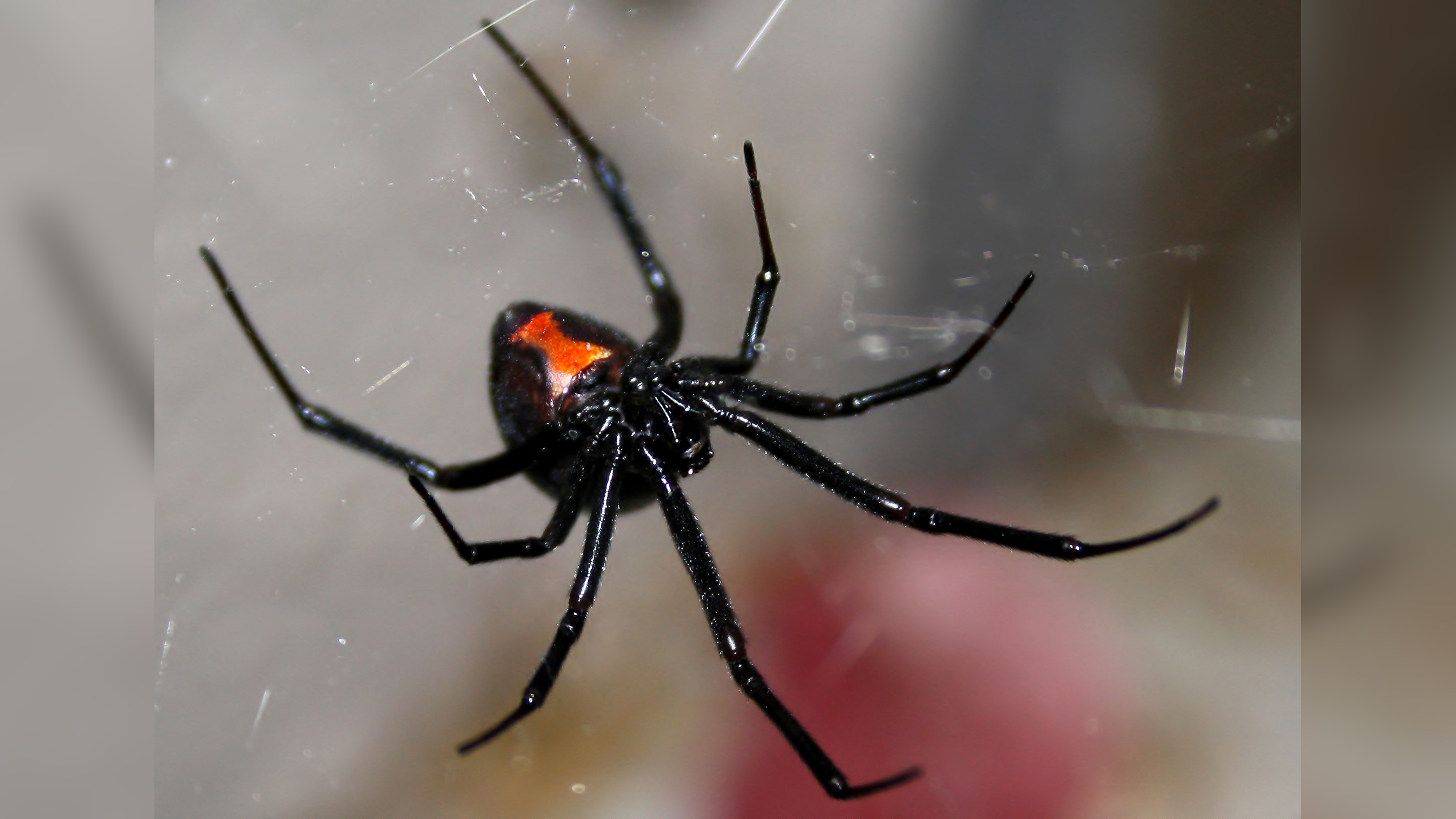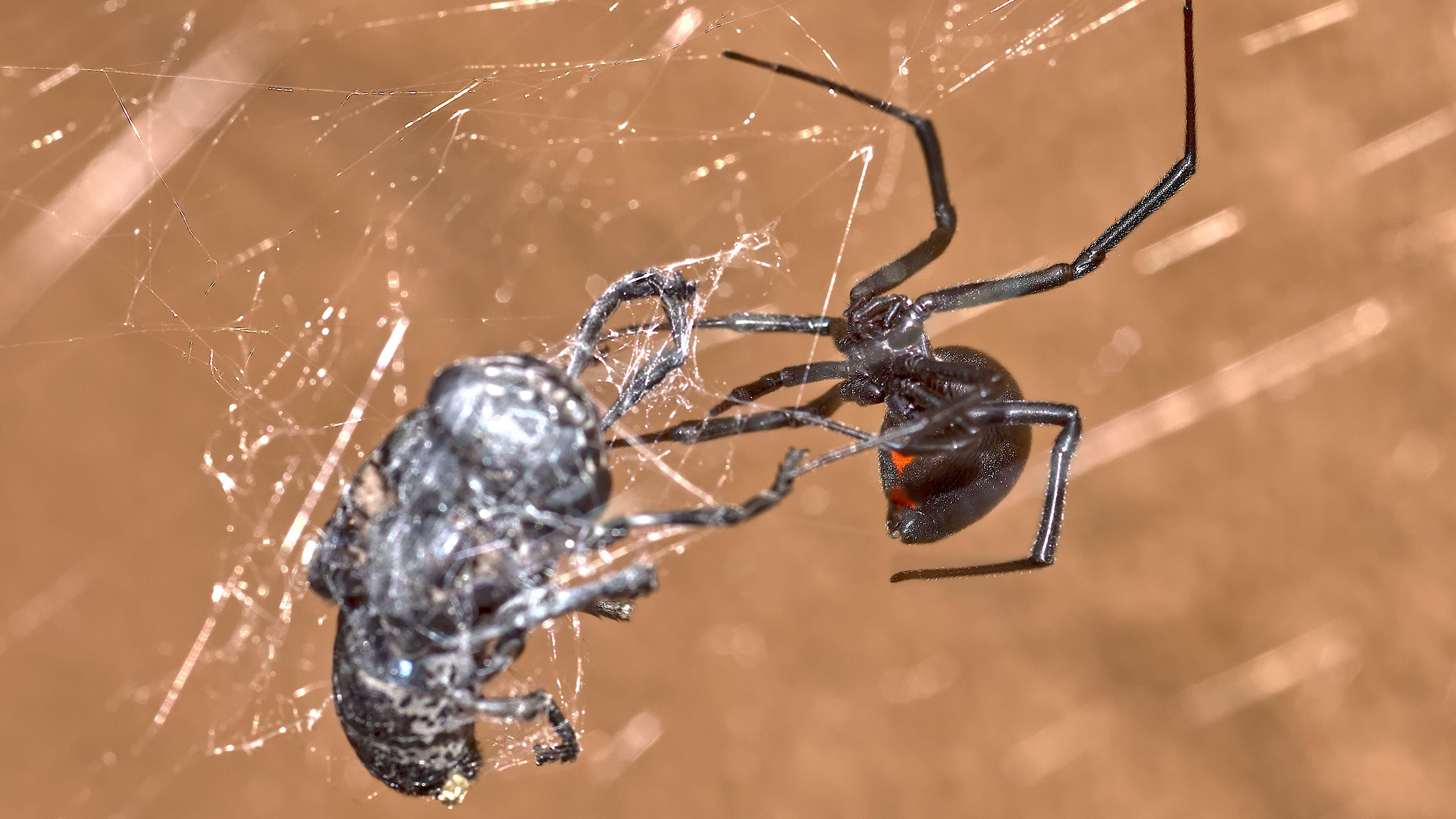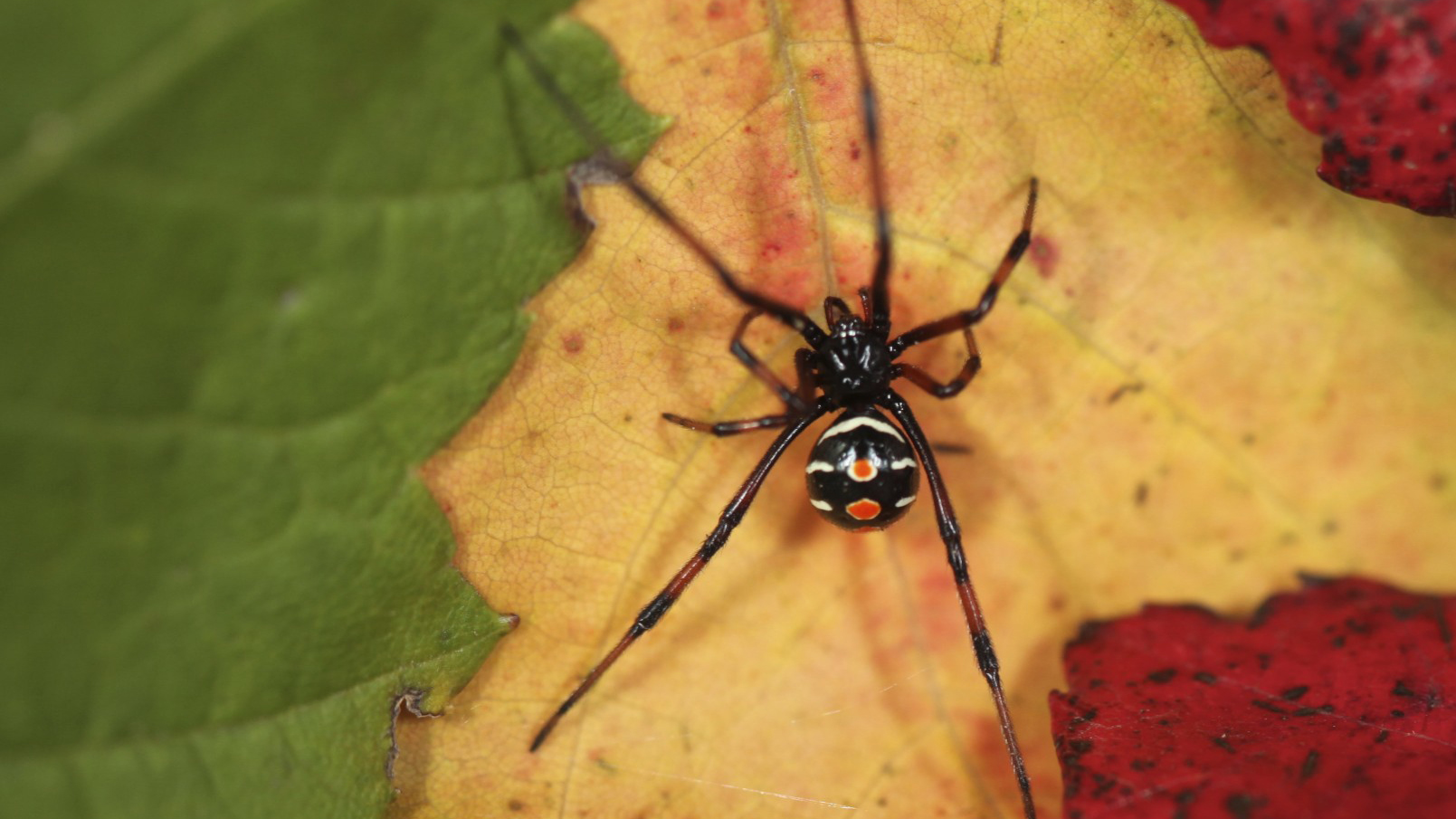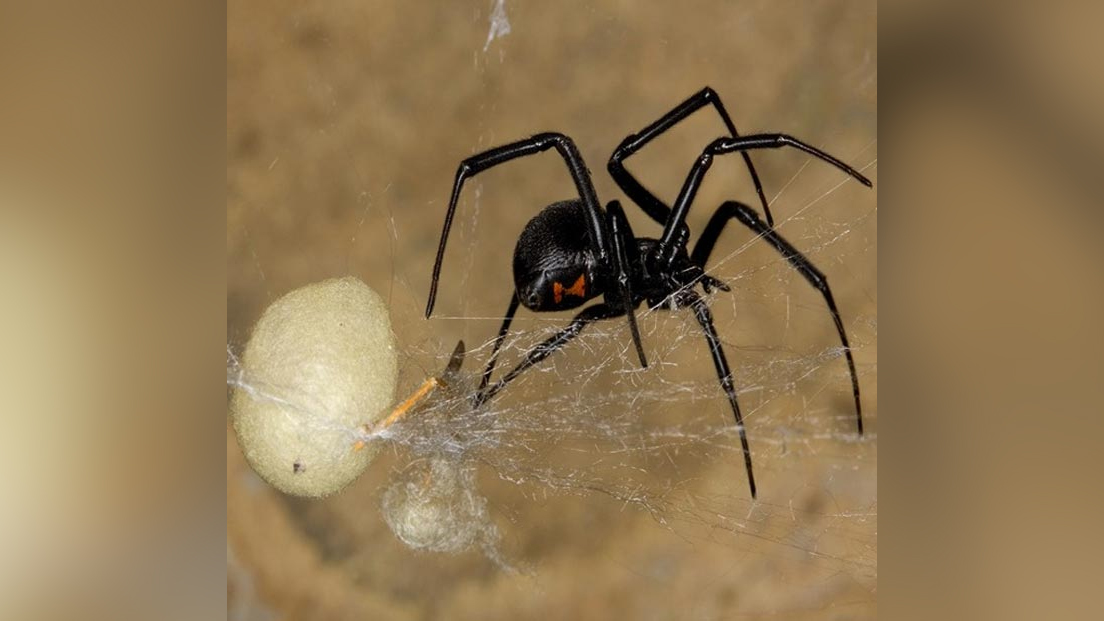Black widow spiders: Facts about this infamous group of arachnids
Do female black widow spiders really eat their mates? Find out this and other facts about this distinct group of arachnids.

Black widow spiders are several species of arachnids in the genus Latrodectus that are known for the females' unique and striking appearance as well as their rumored tendency to eat their mates. They are the most venomous spiders in North America; however, their bite is rarely fatal to humans.
What do black widows look like?
As is the case for many types of spiders, male and female black widows look very different from each other. In all black widow species, "the females are the most distinctive, with shiny black bodies and a red hourglass-shaped marking on the underside of their round abdomen," said Jo-Anne Nina Sewlal, an arachnologist at the University of the West Indies in Trinidad (Sewlal spoke with Live Science in 2014, and passed away in 2020.) The females' hourglass marking can also be orange-yellow.
By comparison, males are lighter in color with smaller abdomens that may have red or pink markings, according to the University of California's Division of Agriculture and Natural Resources (UCDANR). Female black widows have a body length up to 0.5 inches (13 millimeters), and males are typically about half the size of females.
Where do black widows live?
Latrodectus spiders are found in temperate regions throughout the world, including North America, southern Europe and Asia, Australia, Africa and much of South America. In the United States, black widows are found primarily in the South and West, and they inhabit urban areas as well as forests, deserts and grasslands, according to the St. Louis Zoo. Black widows often make their homes near places where people live, spinning their webs in dark corners that may be inside or outside of buildings, according to North Carolina State University (NCSU).
What do black widows eat?

Like many spiders, the black widow eats other spiders and insects that get caught in their webs. But despite their reputation for sexual cannibalism, females do not usually eat their mates, according to the Burke Museum of Natural History and Culture in Seattle, Washington.
"The only known Latrodectus species in which mate cannibalism in nature is the rule, not the exception, are in the Southern Hemisphere," and most black widow males "survive to mate another day," according to the museum. However, black widow newborns often eat their freshly-hatched siblings as they emerge from their eggs, the Nature Conservancy of Canada (NCC) says.
Black widows mostly eat flying and climbing insects and arachnids, but they have also been known to trap and consume small vertebrates such as snakes and lizards, according to the Missouri Department of Conservation. Once the prey becomes tangled up in the black widow's web, the spider paralyzes its meal with a venomous bite. After the prey stops moving, the spider releases digestive enzymes into the prey's body, then carries its meal away to be eaten, according to the Department of Entomology at Iowa State University (ISU).
How many black widow species are there?

There are 31 species of so-called widow spiders in the Latrodectus genus; of those, five species are black widows, the St. Louis Zoo says. Three North American spider species go by the common name black widow: the western species, Latrodectus hesperus; the northern species, Latrodectus variolus; and the southern species, Latrodectus mactans, according to Smithsonian Magazine.
"Black widow spiders belong to the family Theridiidae, commonly referred to as comb-footed spiders," Sewlal said, adding that comb-footed spiders get their name "because they have a series of stiff, short hairs on the last segment of their fourth pair of legs that resemble the teeth of a comb. This is used to drape the silk over the prey when the spider is wrapping it."
There are also red widows and brown widows in the Latrodectus genus.
- Kingdom: Animalia
- Subkingdom: Bilateria
- Infrakingdom: Protostomia
- Superphylum: Ecdysozoa
- Phylum: Arthropoda
- Subphylum: Chelicerata
- Class: Arachnida
- Order: Araneae
- Family: Theridiidae
- Genus: Latrodectus
(Source: ITIS)
How do black widows reproduce?

According to Canadian Geographic, black widows are primarily solitary, with the exception of late spring when mating occurs. Males that are ready to mate begin by spinning silk that they soak with sperm and then wrap around appendages called palps near their heads. When they find a receptive female, they insert their sperm-coated palps into her reproductive opening, Live Science previously reported.
The female then creates papery egg sacs that may contain many hundreds of eggs, which hatch after about 30 days, according to NCC. Spiderlings are whitish or pale yellow after hatching and darken with each molt; females reach maturity in about 90 days and live for about 180 days after that, while males mature after approximately 70 days and then live for another 30 days, ISU says.
However, Latrodectus mactans black widows have been known to live as long as three years in the wild and up to four years in captivity, according to the University of Michigan's Animal Diversity Web.
How toxic is the black widow's bite?
Because female black widows are so much bigger than males, their bites are more dangerous to people. Black widow venom is reported to be 15 times stronger than a rattlesnake's, but because spiders deliver far less venom than snakes do, their bites — though painful — are a serious risk only to the very young and the very old, according to Smithsonian Magazine.
"Bites from this spider very rarely result in death," Sewlal said.
Though the black widow's bite feels like a pinprick to most people, their toxin contains a chemical called alpha-latrotoxin that swiftly overwhelms nerve cells, causing swelling and intense pain, according to Smithsonian..
"The effects of a bite by a member of this genus depend on the species, but effects can include nausea, profuse sweating, severe pain in abdomen and back, muscle aches, hypertension and paralysis of the diaphragm, which can cause difficulty in breathing," Sewlal said.
Pain may last for eight to 12 hours, and the other symptoms may continue for several days, according to the Occupational Safety and Health Administration. Black widow antivenom is available to help minimize damage; the antivenom is effective for bites from all black widow species, and pain is usually gone within 30 minutes, according to UCDANR.
Additional resources
- Download a fact sheet about black widow spiders from the Occupational Safety and Health Administration.
- Read what the National Library of Medicine has to say about black widow spider bites.
- Learn about the Black Widow (Natasha Romanoff), Marvel Comics' super-spy and member of the Avengers.
Sign up for the Live Science daily newsletter now
Get the world’s most fascinating discoveries delivered straight to your inbox.

Mindy Weisberger is an editor at Scholastic and a former Live Science channel editor and senior writer. She has reported on general science, covering climate change, paleontology, biology and space. Mindy studied film at Columbia University; prior to Live Science she produced, wrote and directed media for the American Museum of Natural History in New York City. Her videos about dinosaurs, astrophysics, biodiversity and evolution appear in museums and science centers worldwide, earning awards such as the CINE Golden Eagle and the Communicator Award of Excellence. Her writing has also appeared in Scientific American, The Washington Post and How It Works Magazine. Her book "Rise of the Zombie Bugs: The Surprising Science of Parasitic Mind Control" will be published in spring 2025 by Johns Hopkins University Press.










